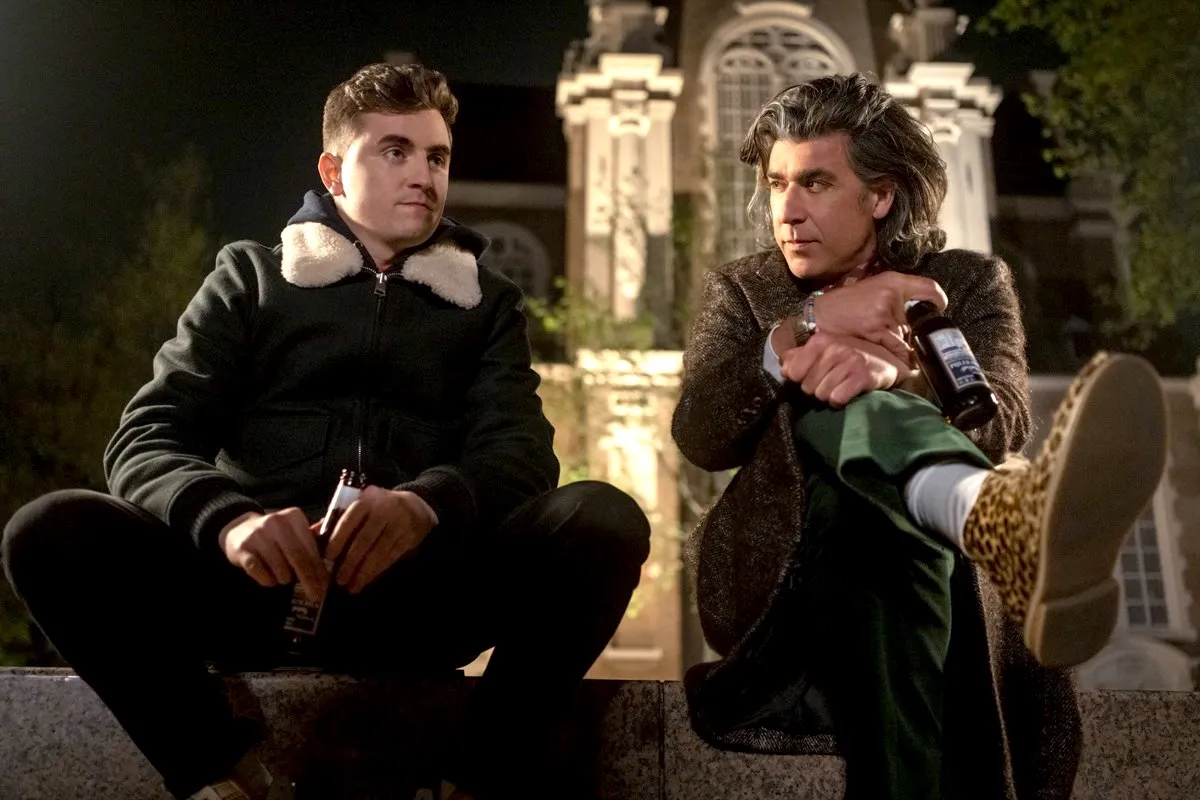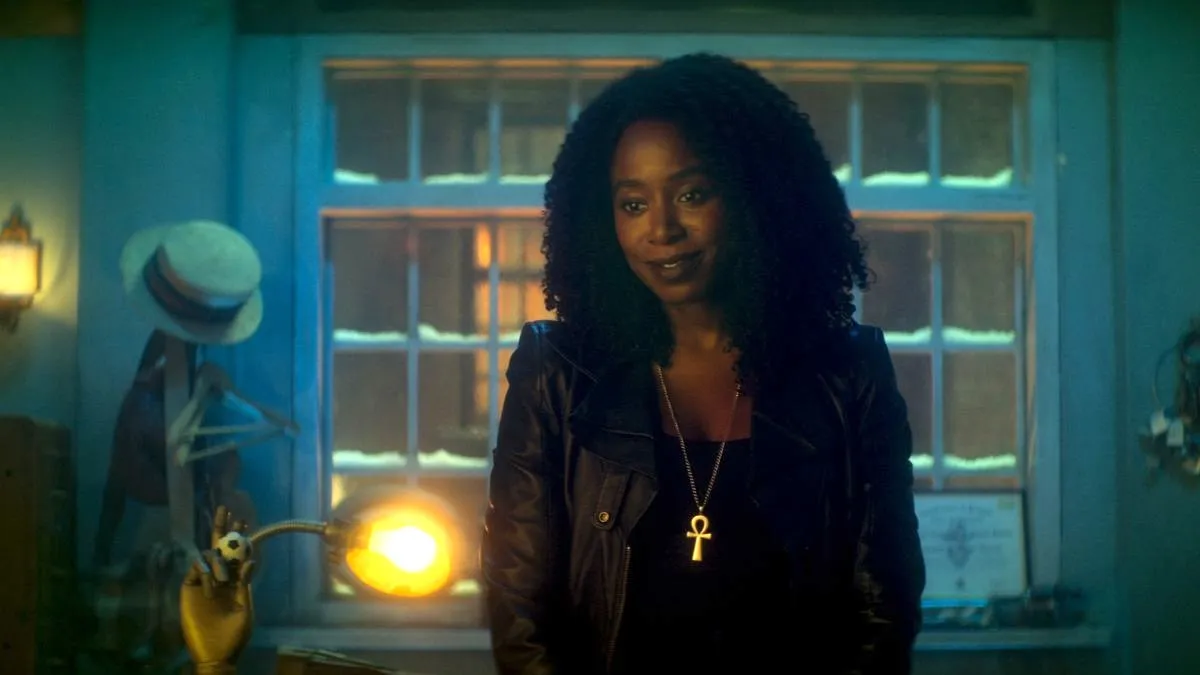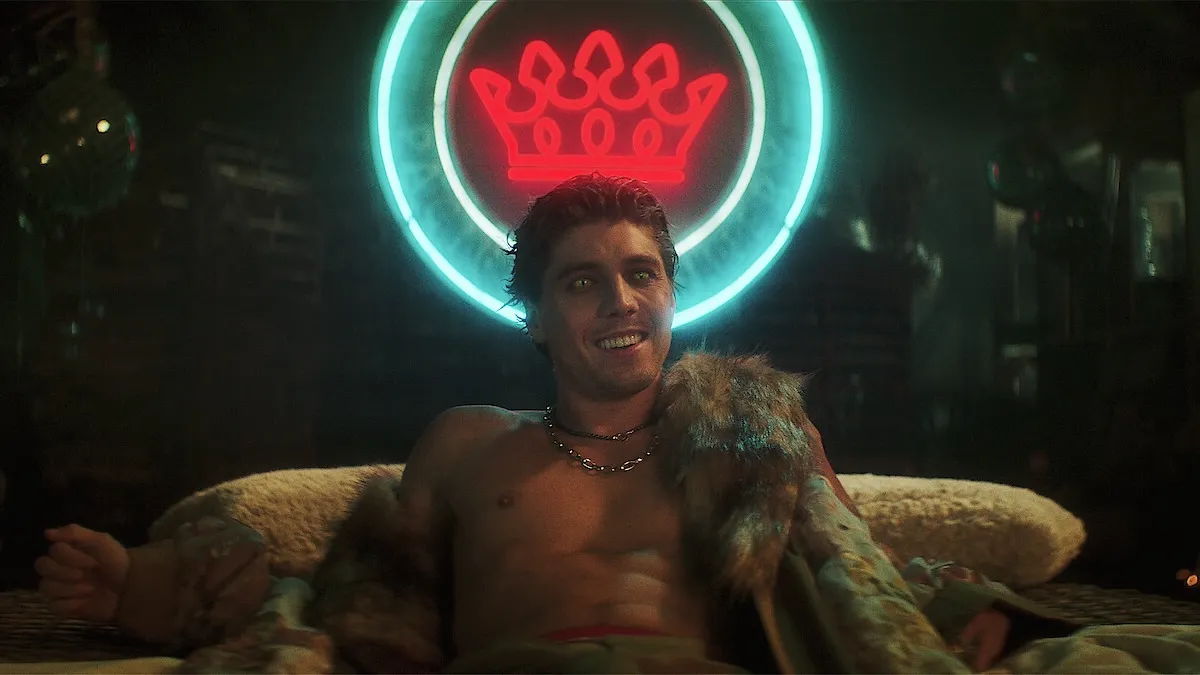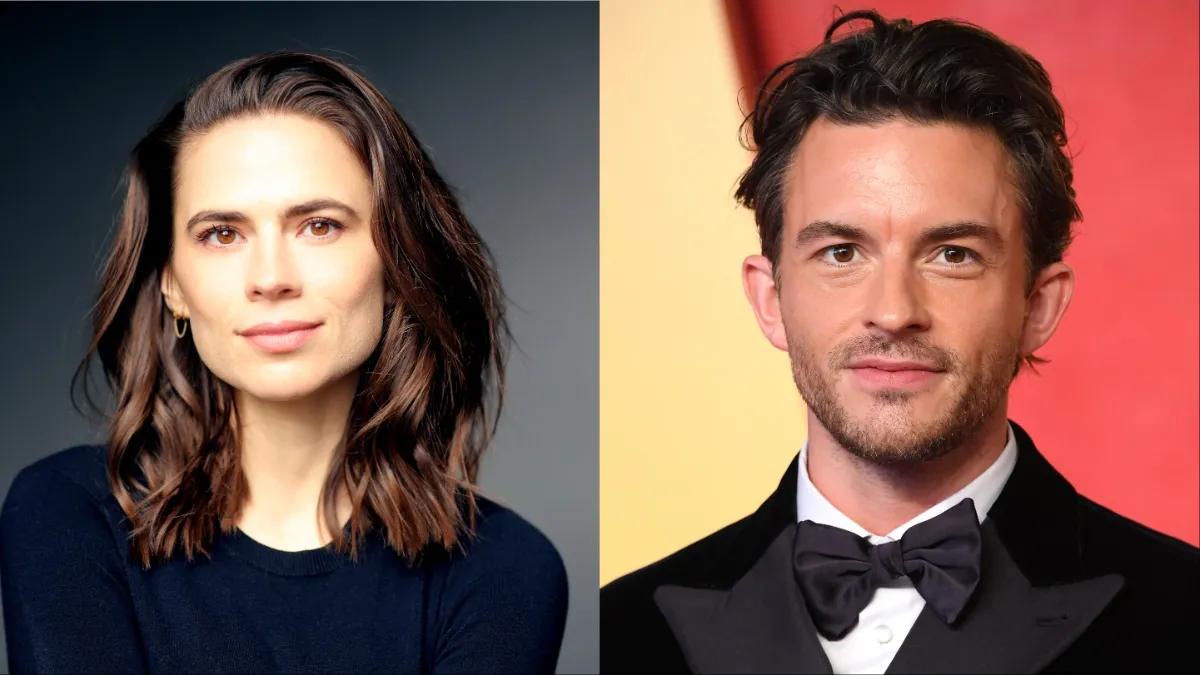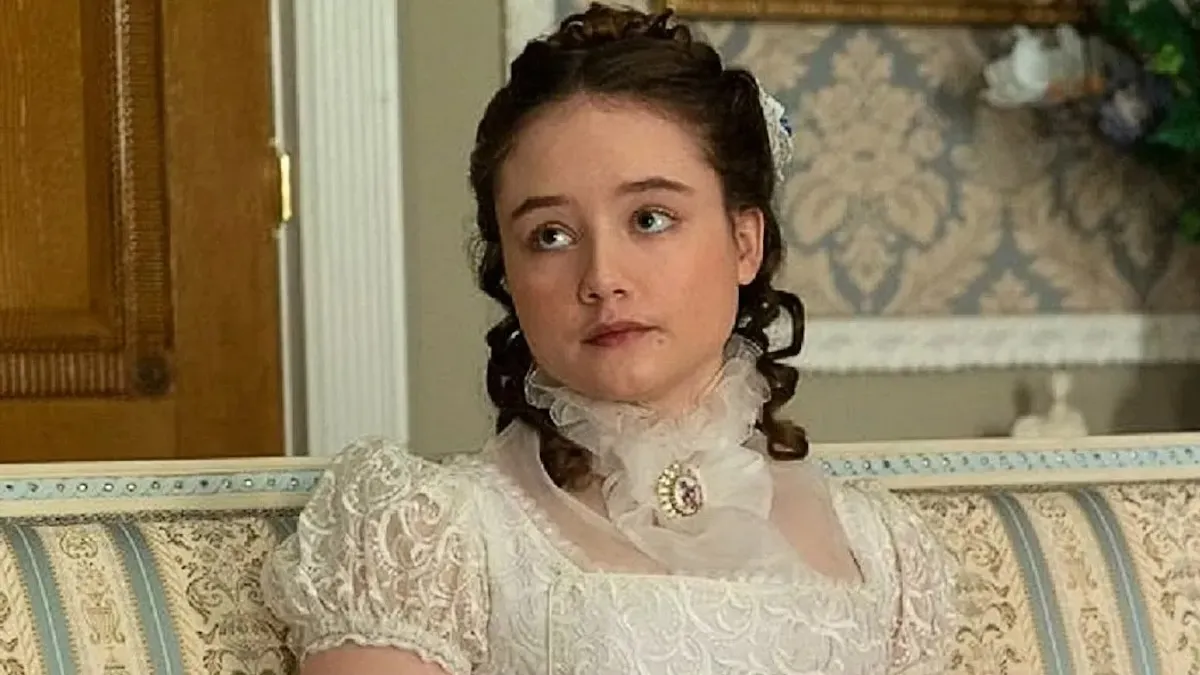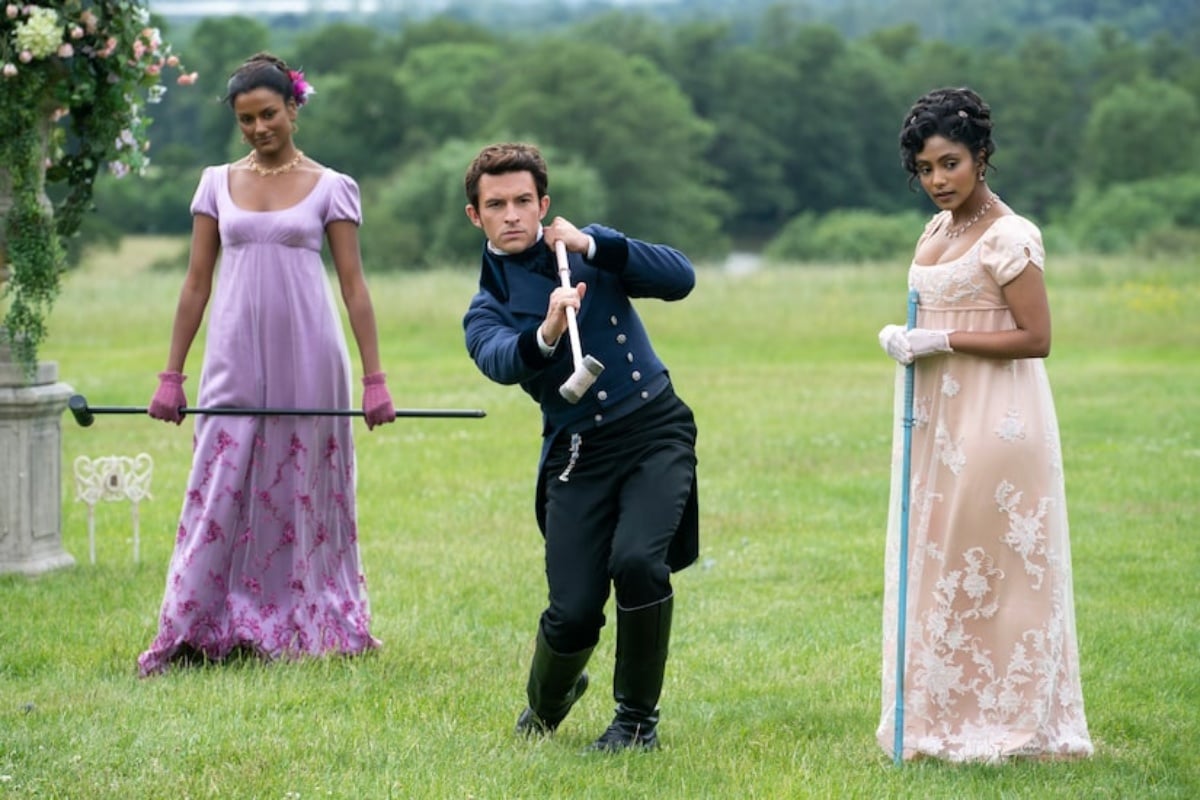Season 3, episode 6 of Ted Lasso, “Sunflowers,” was one of the best of the season. It allowed several of the characters a break from sports drama and a chance to deal with stuff going on in their personal lives. One of the highlights was the interaction between Colin (Billy Hughes) and Trent (James Lance), which happened to culminate at a perfect Amsterdam location.
They enjoyed a couple of beers while sitting at the Homomonument, a memorial in Amsterdam that honors the LGBTQIA+ folks who were persecuted, imprisoned, and killed by Germany during World War II, as well as all queer people who have been persecuted.
Colin in desperate need of a gay mentor
As Lauren Coates wrote here at The Mary Sue, this episode of Ted Lasso may have confirmed that Trent Crimm is gay, but fans have been speculating that this was true forever. Still, the confirmation is meaningful, not only to viewers, but to the narrative of the show.
Colin has been keeping his professional and personal life separate for fear of what coming out as gay would do to his career or his camaraderie with his teammates, but that separation has been taking its toll on him this season, and Colin has been struggling. It was lucky, then, that of all the people who could’ve stumbled upon Colin kissing a guy, it was Trent—an older gay man who also works in a public-facing industry as a journalist.
Rather than use what he discovered about Colin as a “story angle,” Trent approached Colin one-on-one, on a night where the team was given the evening off with no curfew, and shared the truth about himself to give Colin the safe space to share his truth in return. They ended up having a fun night on the town, as well as a sweet and necessary heart-to-heart.
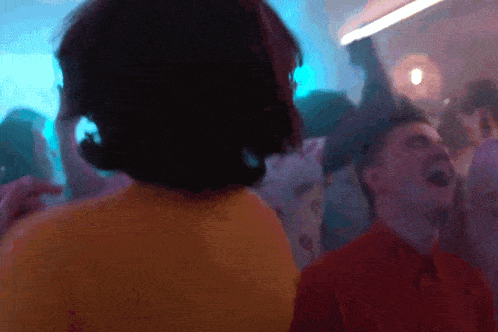
For the first time, Colin had someone who could understand his public and private lives, and his desire to combine them into one life. He’s also gained someone with more lived experience as a gay man—a gay mentor—who has a broader historical perspective on that experience. This makes their scene at the Homomonument all the more poignant.
The history behind the memorial
The Nazis made homosexuality a felony (it was previously a “minor offense”) when they took power in Germany the 1930s. They used a system of color-coded triangle patches to identify concentration camp prisoners, and an inverted pink triangle was used to identify gay and bi men, as well as trans women.
Homosexual cis women and trans men weren’t systematically imprisoned to the same degree, but when they were, they got inverted black triangles for being “asocial” along with Roma and Sinti people, alcoholics, beggars, unhoused people, nomads, sex workers, and Aryans and Jews who had sex with each other, which was illegal.
Even after the war, homosexuality remained a felony until 1968 in East Germany and 1969 in West Germany, so there are queer people who went from a Nazi concentration camp right into prison in the New German Republic. Wikipedia also says that “West Germany continued to imprison those identified as homosexual until 1994 under a revised version of [Paragraph 175], which still made sex between men up to the age of 21—as well as queer male sex work—illegal.”
So the effects of the inverted pink triangle destroyed lives long after the end of the war.
What does the Homomonument represent?
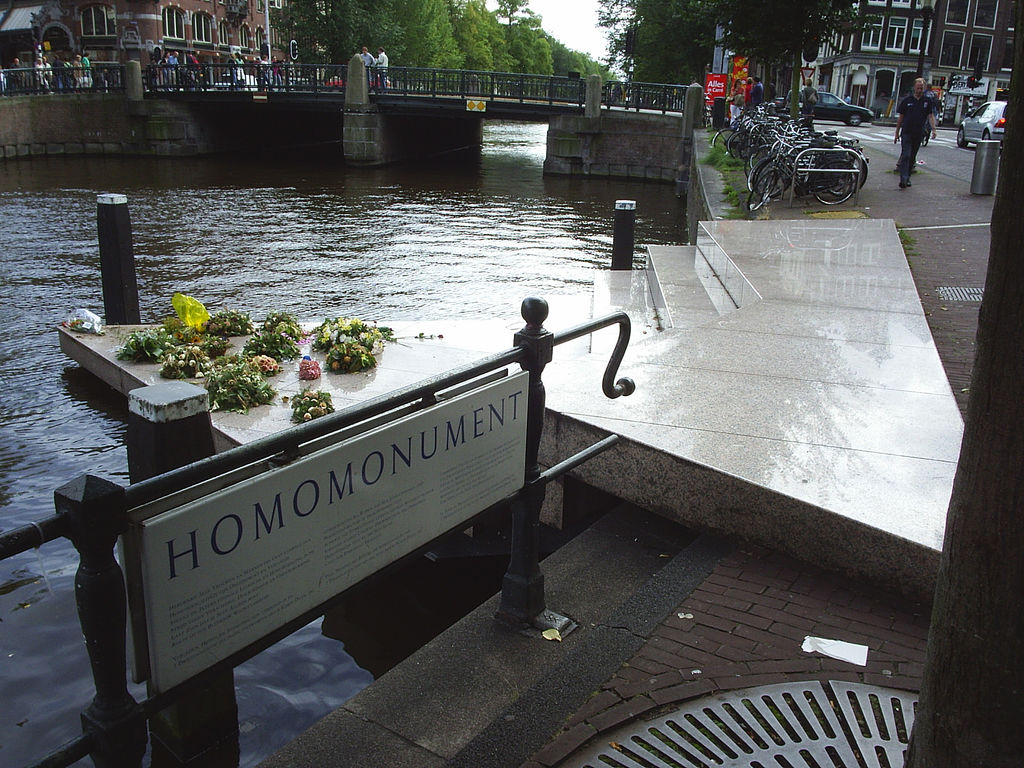
First things first, “homo” is the actual Dutch word for gay (as I was taught by fellow TMS freelancer El Kuiper, who is Dutch and recently wrote about all the stuff Ted Lasso got right about Amsterdam). The acronym in Dutch is also most commonly LHBTQIA+. So, the name of the memorial is neither an insult, nor an attempt at humor. It’s literally just “The Gay Monument.”
The Homomonument became the first monument in the world to commemorate LGBTQIA+ people who were killed by the Nazis when it opened in 1987. The un-inverted pink triangle became a reclaimed symbol of pride for the LGBTQIA+ community, which is why designer Karin Daan designed it as one large triangle made up of three smaller triangles.
One triangle (The Present) is made up of a small set of stairs and a platform that extends out onto the Keizersgracht canal. It points to Dam Square, the location of the National Monument to the Victims of World War II. An ever-present reminder that the queer people represented by this monument are connected to the victims memorialized by that other monument, and shouldn’t be erased.
Another triangle (The Future) is a raised platform, which points to the headquarters of the the queer rights group COC (“Cultuur en Ontspannings-Centrum,” or “Center for Culture and Recreation”), which was founded in 1946 (hence the generic-sounding code name) but continues to work toward a future where all LGBTQIA+ folks are treated with dignity and respect.
The third triangle (The Past) is flush with the surrounding cobblestone. Around its borders, it reads, “Naar Vriendschap Zulk een Mateloos Verlangen” (English: “Such a boundless craving for friendship”), a line from the poem To the Young Fisherman, by Dutch-Jewish poet Jacob Israël de Haan, who was alleged to be gay. The apex of this triangle points to the home of Anne Frank, one young girl who has come to symbolize the many human tragedies caused by Nazi genocide.
Daan wanted the Homomonument to be distinct, but also woven into the fabric of the city. According to Wikipedia, she said the following about it in 2009:
“I think the best part is that the monument integrates itself into the place like an embroidery, and from above it is clearly visible how the triangle is intertwined with the urban and social space, that, for example, when taxi drivers stand in the middle of the monument, they are hardly aware of it. I think that is the most beautiful component of the Homomonument: we are there, proud and strong as granite, the monument binds us together here and now, but we are just as intertwined with the city and society in a larger time and space.”
(Wikipedia)
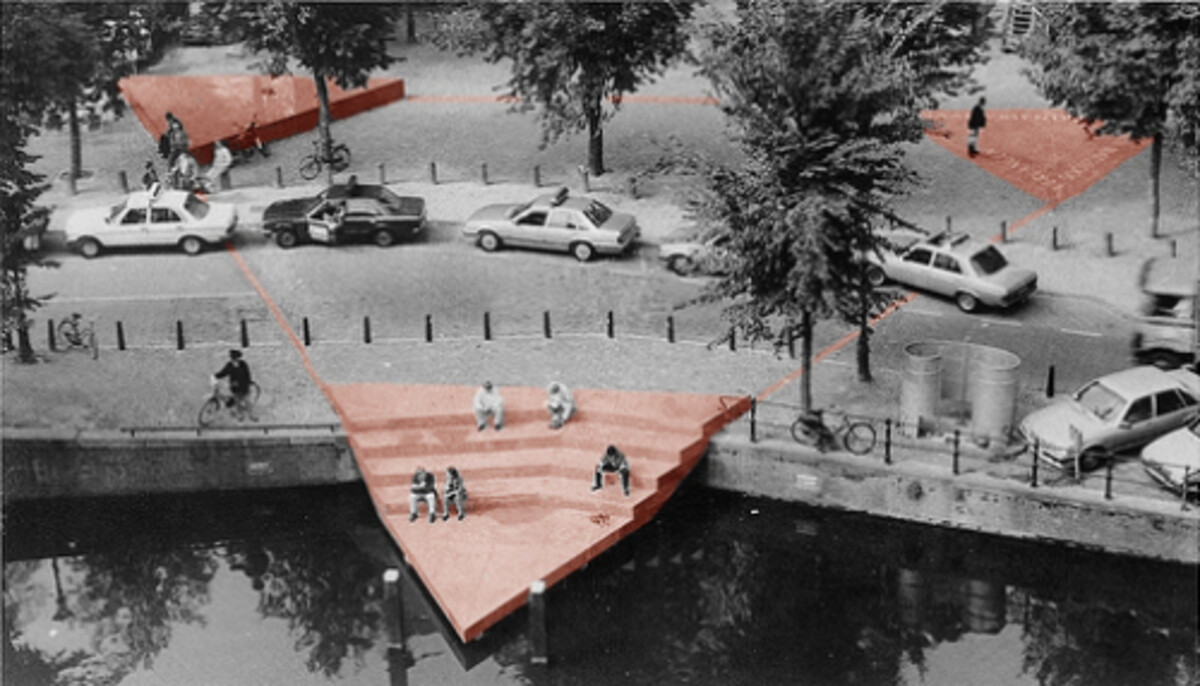
This episode could’ve been called “Triangles”
At the end of the Colin/Trent scene, the bells of Westerkerk begin to ring, and Trent says that Anne Frank heard those same bells every night, because she lived right down that nearby street.
Colin says, “Right next to this big, pink triangle?”
Trent replies, “I think that came a bit later.”
Colin nods, embarrassed, “Right …”
The Homomonument’s triangles weren’t the only ones in the episode, either! Another storyline in “Sunflowers” involves Ted (Jason Sudeikis) spending the evening in an America-themed restaurant looking for inspiration that might help improve his coaching.
He ends up accidentally reinventing a way of playing called “Total Football,” which was invented in Holland in the 1970s. The idea is that the team’s formation is a series of constantly-moving triangles. Each player knows that two other players have their back, but everyone is free to move wherever they want as long as they always have two other teammates with whom they can interact.
“Our guys need freedom,” Ted explains to Coach Beard. “Go wherever they wanna go with all their guts, their hearts. As long as they remember to fill in the space that someone left behind. They gotta have one another’s backs, that’s for sure. [I]t’s just constant, non-stop motion. Just going from position to position until positions don’t even exist anymore. It’s fast, fluid … free.”
Fluidity and freedom are precisely what the LGBTQIA+ community have been trying to gift the world since the beginning of human civilization. Unfortunately, Mainstream Heteronormative Patriarchy doesn’t yet know what to do with such an expansive gift, so it lashes out against queer generosity.
Triangles can remind us that having each other’s backs as queer people (like Trent now has Colin’s back) while continuing to move forward until things like the gender binary no longer matter will eventually lead to all of us being more fluid, and more free.
Maybe one day, Heteronormative Patriarchy will pull a Ted and reinvent that notion despite the queer community having been living it all along.
(featured image: Apple TV+)



